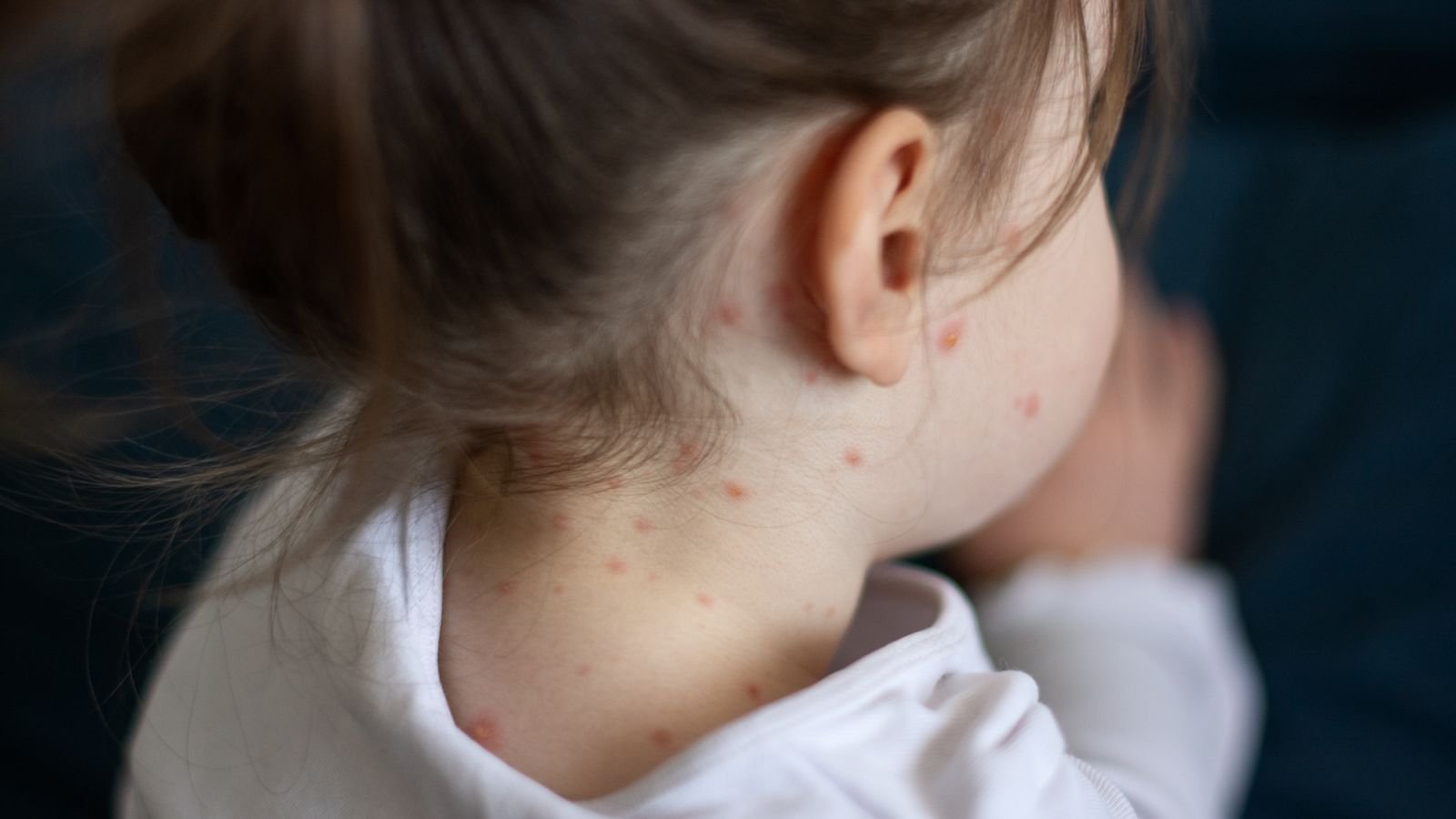Overview of Measles
Measles: What is it?
The rubeola virus is the source of the highly contagious viral illness known as measles. Transmission can occur from even a brief contact with an infected person, particularly if you are not vaccinated. Although its distinctive rash is its most well-known feature, Measles Symptoms are significantly more extensive.
The Background and Worldwide Effects of Measles
This is not merely a childhood ailment. Measles has been around for millennia and still affects communities all over the world, particularly in areas with low immunization rates. The WHO reports that measles killed over 140,000 individuals in 2018, the majority of whom
children under five.
Understanding Measles Symptoms
How Measles Starts
Incubation Period
After exposure, the virus silently brews for 7 to 14 days. During this time, you won’t see or feel anything — but the virus is getting ready to strike.
Early Signs and General Malaise
Once the virus begins to reveal itself, early Measles Symptoms include:
-
High fever
-
Fatigue
-
Loss of appetite
-
Dry cough
-
Sore throat
-
Runny nose
-
Red, watery eyes (conjunctivitis)
It’s easy to mistake these for a regular cold or flu. But things escalate quickly.
Classic Measles Symptoms
High Fever
A fever as high as 104°F (40°C) is one of the earliest red flags. This isn’t your average low-grade fever — it comes on fast and hard.
Cough, Runny Nose, and Red Eyes
These three form the “measles triad.” They typically show up before the rash and help distinguish measles from other viral illnesses.
Koplik Spots: The Hidden Clue
These are tiny white or bluish-white spots inside the cheeks — like grains of salt on a red background. Unique to measles, Koplik spots appear 1–2 days before the rash and are a sure sign of the virus.
The Rash: Measles Symptoms
A measles rash usually starts 3–5 days after symptoms begin, often behind the ears or at the hairline. It then spreads downward to the face, chest, arms, and legs. The rash appears as flat red spots, sometimes merging into blotches.
Measles Symptoms Progression Timeline
Days 1–3: Initial Signs
You’ll first notice cold-like symptoms, red eyes, fatigue, and a rising fever. This phase is the body’s initial response to the virus.
Days 4–7: Full-Blown Symptoms
This is when Koplik spots appear, followed by the rash. The fever may spike, and other symptoms worsen. This is the most contagious period.
Day 7 and Beyond: Recovery or Complications
If the immune system fights back successfully, symptoms begin to fade. But complications can develop, especially in vulnerable groups.
Complications from Measles Symptoms
Common Complications
-
Ear infections
-
Diarrhea
-
Laryngitis
-
Dehydration
These are annoying but usually treatable with rest and fluids.
Severe and Rare Complications
-
Pneumonia: Leading cause of measles-related deaths
-
Encephalitis: Swelling of the brain, potentially fatal
-
Blindness
-
Subacute sclerosing panencephalitis (SSPE): A rare but fatal brain disorder that can appear years later
Different Age Groups Affected by Measles
Children’s Measles
Children under five are especially at risk. Since their immune systems are still maturing, they are vulnerable to serious consequences including encephalitis and pneumonia.
Adult Measles
Measles Symptoms may be worse in adults than in youngsters. It becomes more dangerous as you age, particularly if you have never had measles or been vaccinated.
Measles in People with Immunocompromised Systems
There are potentially fatal hazards for people receiving cancer therapy, living with HIV, or taking immunosuppressive medications. They might not get the entire rash, which makes diagnosis difficult.
Diagnosing Measles
When to See a Doctor
If you or your child has a high fever, rash, and red eyes, especially after travel or exposure to an infected person — call your healthcare provider immediately.
Medical Tests and Confirmations
Doctors may perform:
-
Blood tests
-
Nasal or throat swabs
-
Antibody screening
These confirm the presence of the measles virus or immune response to it.
Managing Measles Symptoms at Home
Home Remedies for Relief
There’s no cure for measles, but you can make the illness more bearable:
-
Stay hydrated
-
Use a humidifier
-
Rest in a dimly lit room
-
Vitamin A supplements (especially for children)
Monitoring for Complications
Keep a close eye on:
-
Persistent fever
-
Labored breathing
-
Seizures
-
Unresponsiveness
Seek emergency care if any of these develop.

The Value of Vaccination in Measles Prevention
Your best line of defense is the MMR (measles, mumps, rubella) vaccine. 97% of the time, two dosages are effective. It is accessible, safe, and literally life-saving.
The Definition of Herd Immunity
The virus cannot readily spread once a sufficient number of people have received vaccinations. This protects those who are unable to receive vaccinations, such as immunocompromised individuals and newborns. It’s similar like putting out a fire before it gets out of control.
In conclusion
Measles is a potentially fatal sickness with severe symptoms and implications, not merely a benign childhood ailment. Being aware of these indicators and taking prompt action can have a significant impact. The greatest method to control this illness, whether you’re a parent, caregiver, or just someone who cares, is to be aware and vaccinated.

